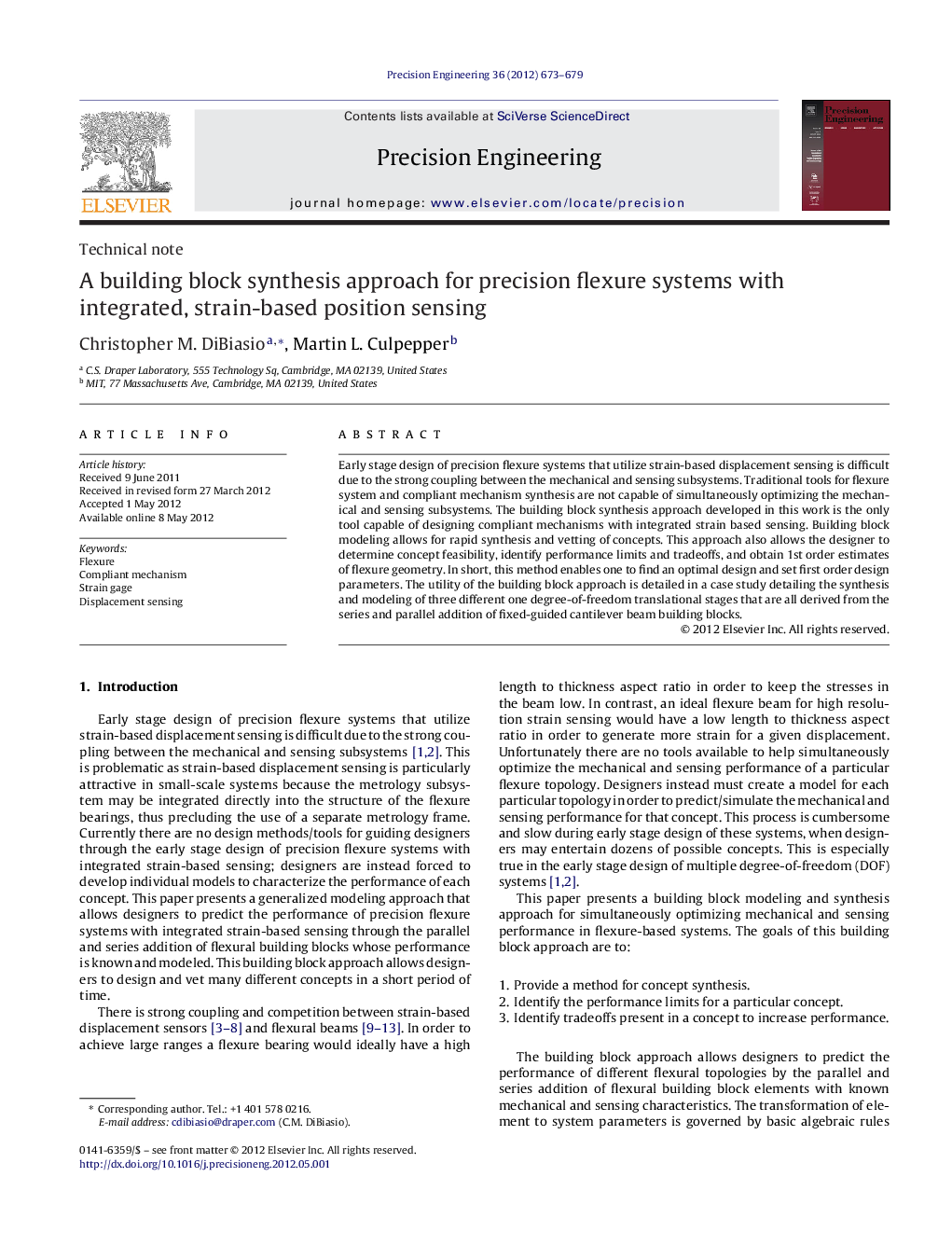| Article ID | Journal | Published Year | Pages | File Type |
|---|---|---|---|---|
| 804591 | Precision Engineering | 2012 | 7 Pages |
Early stage design of precision flexure systems that utilize strain-based displacement sensing is difficult due to the strong coupling between the mechanical and sensing subsystems. Traditional tools for flexure system and compliant mechanism synthesis are not capable of simultaneously optimizing the mechanical and sensing subsystems. The building block synthesis approach developed in this work is the only tool capable of designing compliant mechanisms with integrated strain based sensing. Building block modeling allows for rapid synthesis and vetting of concepts. This approach also allows the designer to determine concept feasibility, identify performance limits and tradeoffs, and obtain 1st order estimates of flexure geometry. In short, this method enables one to find an optimal design and set first order design parameters. The utility of the building block approach is detailed in a case study detailing the synthesis and modeling of three different one degree-of-freedom translational stages that are all derived from the series and parallel addition of fixed-guided cantilever beam building blocks.
► Introduce a building block synthesis approach to design flexure systems with strain-based sensing. ► Currently no approach exists to help designers vet concepts; forcing them to model/optimize each one. ► This approach identifies performance limits and reduces the amount of time needed to vet concepts. ► Larger systems are synthesized by the series and parallel addition of individual elements. ► System performance is obtained from element performance via algebraic relationships.
